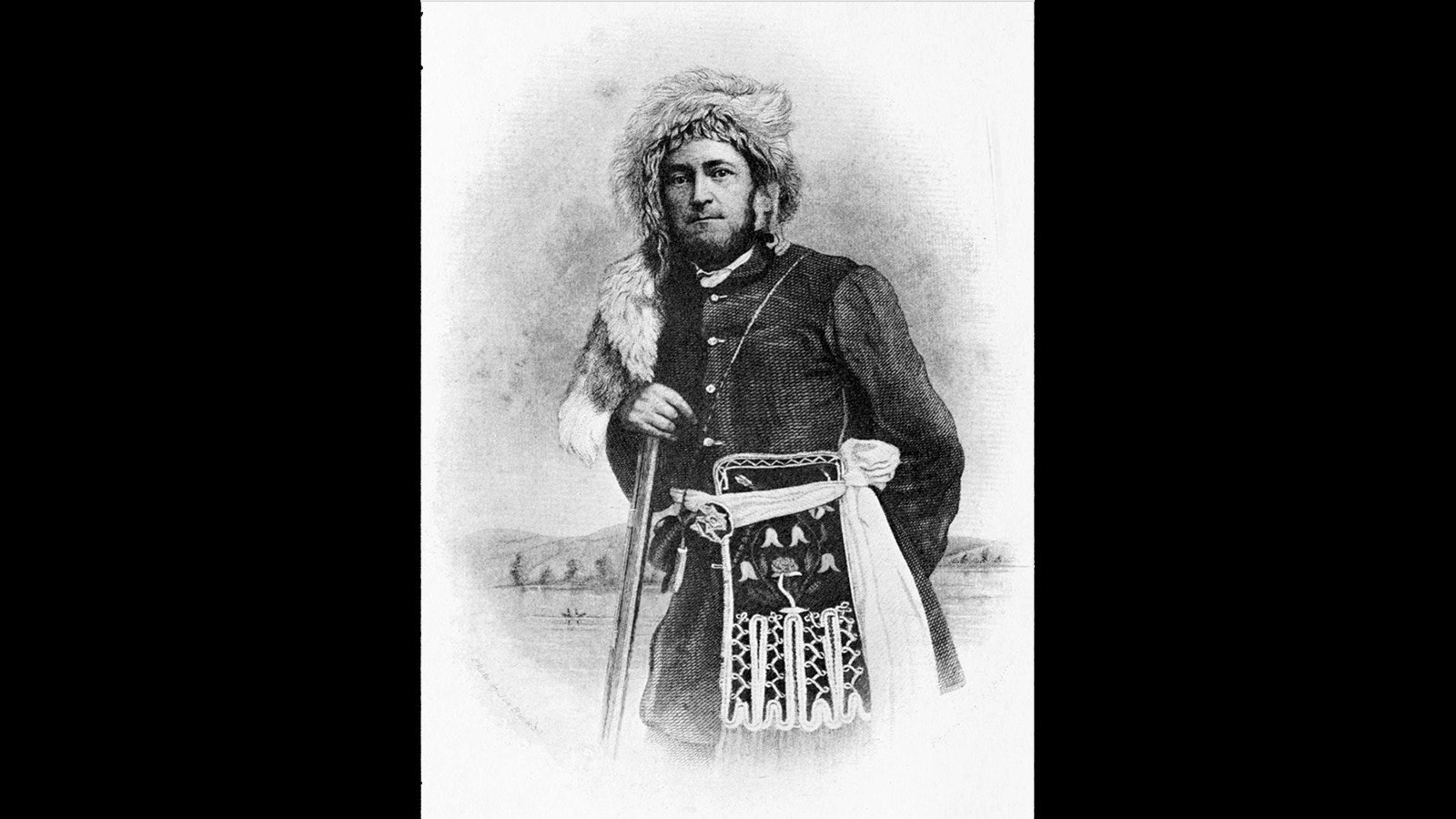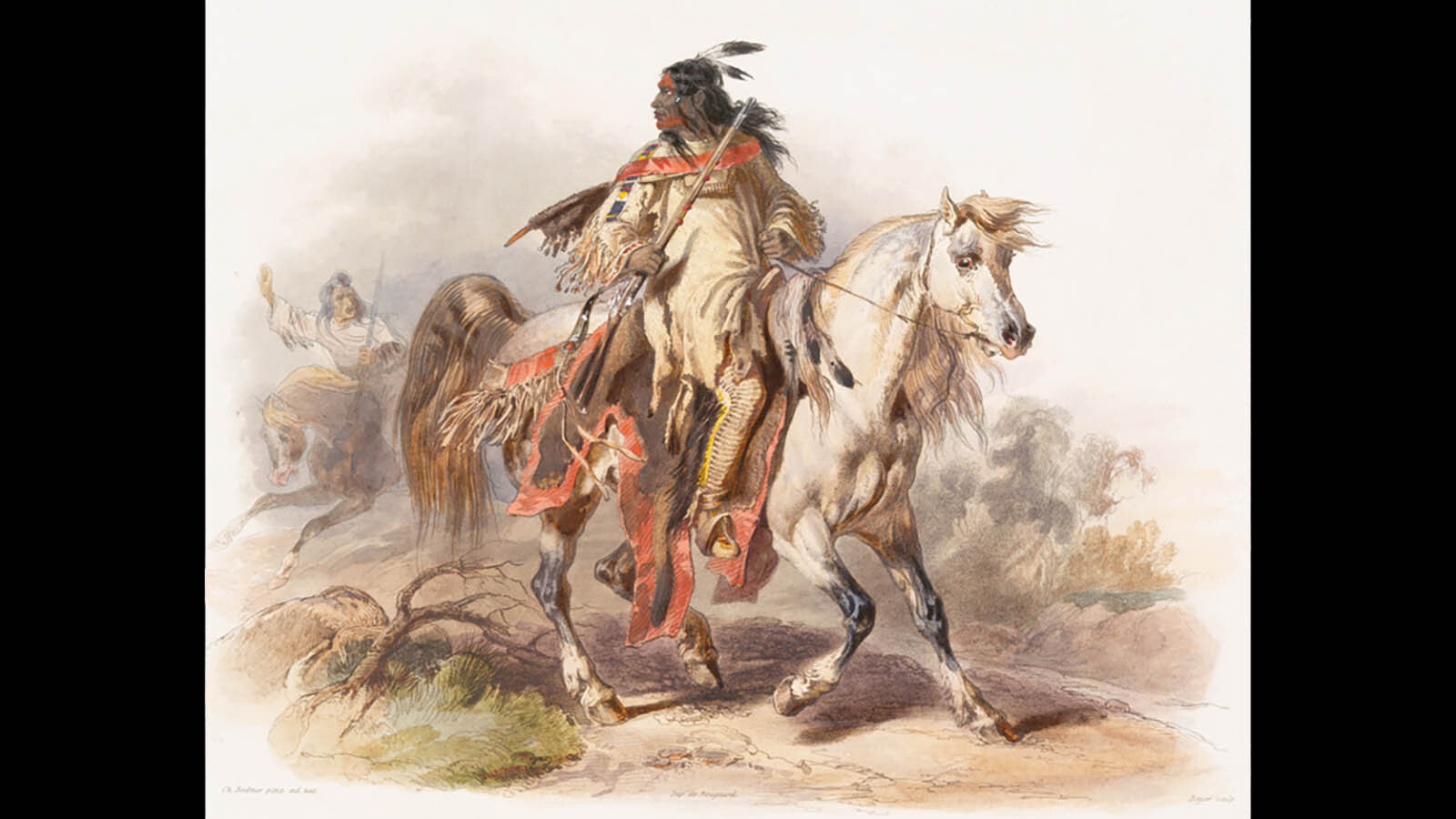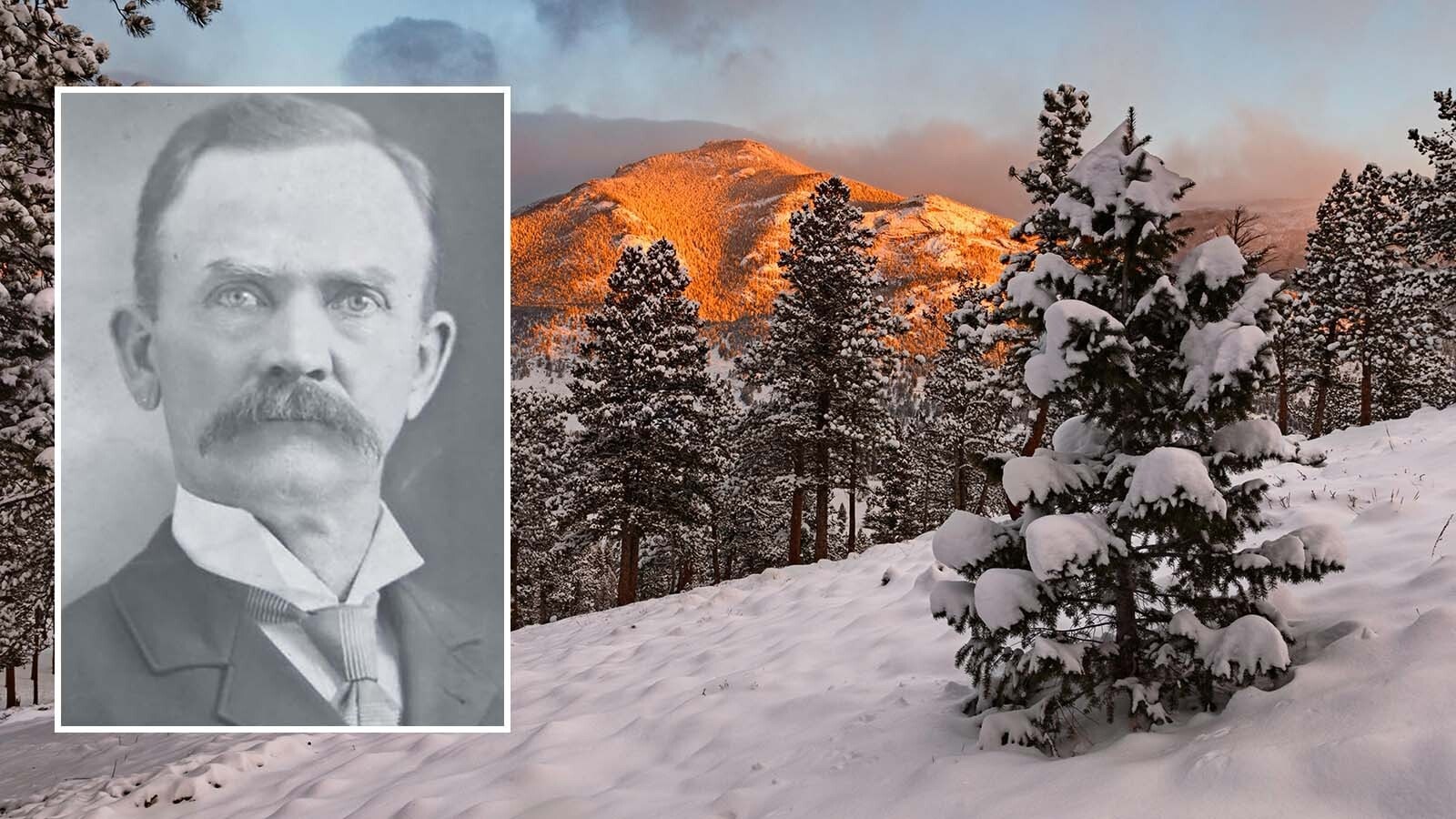In the 1820s, trappers in the future Wyoming territory lived on the edge of danger.
They faced death each day as they searched for the beaver pelts Easterners needed to be fashionable.
For some mountain men of this era, their death came from the claws of bears or a rearing horse, while for others it was the arrow of an enemy warrior.
These men rarely made it to old age. If the bears and Indian warriors didn’t get them, they were drowned, frozen, starved or died of thirst.
If a man died in this inhospitable land, it was likely that there was no one to mourn them, and they were lucky if they were even buried.
“Live men were what we wanted; dead ones were of no account,” Joe Meek was quoted as saying in his biography “Joe Meek, The Merry Mountain Man” by Stanley Vestal.
Meek shared many of his adventures during his years as a mountain man, including how he learned the value of staying alert at all times — except when falling asleep on guard duty nearly cost him more than just his pride.
The Hostiles
Meek had first appeared in the Wyoming wilderness in spring 1829 having just turned 18. After surviving his first rendezvous, Meek was ordered off with other trappers to make his first hunt for the valuable beaver.
It was September 1829 and of all the tribes in the mountains, the Blackfeet were most feared by the mountain men and their tribal allies.
John Colter, Meek learned, had been traveling with a band of friendly Crows when, to survive, he had to defend himself when the Blackfeet attacked the Crows, according to his biography.
Colter was a good shot and so was the first American to shoot down a Blackfoot.
Ever since that day, the mountain men told this young greenhorn, Bug’s Boys as they were nicknamed, had been hostile to all trappers.
The Blackfoot Confederacy was made up of several big tribes: Blackfeet, Piegans and Bloods. They were all closely allied with the Big Bellies or Gros Ventres of the Prairie.
According to Meek, the Blackfeet were a formable foe who generally went to war on foot and could easily cover their trail. They lay in wait in thickets and gulches and Meek said they were known to be as dangerous as a rattlesnake, Vestal wrote.
Many of the Blackfeet had also been well armed by traders. But Blackfeet or no Blackfeet, Meek and his companions had to trap the fur they were hired to get.

The Greenhorn’s First Trapping Trip
As fall loomed, Meek rode in search of beaver signs.
Vestal recounts how, fearing that the sound of gunfire might bring Blackfeet upon them, the trappers in the party did not hunt for meat, but ate the beaver they caught.
Meek learned to skin beaver, cut off the tail and hang it on a stick by the fire to roast. The heat peeled off the skin to the meat beneath. Beaver tail tasted like marrow or boiled perch, although it was oilier than either and delicious to the hungry teenager.
It was agreed that the winter quarters would be on the Wind River.
The trappers and the greenhorn Meek packed up to make the fall hunt in the remote American territory.
William Sublette, an agent of the Rocky Mountain Fur Co., led the men, according to Meek’s biography. He planned a route that would take them up Henry’s Fork of Snake River toward the North Pass to Missouri Lake, where the Madison Fork of the Missouri River rises.
The area was in dangerous Blackfoot country, much of it unexplored. Before the camp on the forks of the Snake could pull out, Meek was in his first Indian fight.
It was early morning, still twilight, when Meek heard the call to turn out, Vestal wrote. He was just ready to loosen the lariats and hobbles of his mules when he heard a high-pitched yelp, a chorus of war whoops, and the beat of hoofs on the hard, dry prairie, coming on the run.
Meek clung to the lariat of his rearing mule. Through the flash of gunfire, he saw the ragged silhouette of a hundred warriors, half-hidden in the white powder smoke. They tore by, waving blankets as they tried to stampede the horses.
As the smoke drifted away, Meek’s biography describes that he saw that most of the horses were still hobbled and staked out securely.
The Blackfeet had jumped the camp a little too quick. Had they waited a few minutes longer until all the animals had been turned loose, they would have succeeded in stampeding the whole herd.
It had happened so quickly that Meek didn’t have time to do anything except hang on to his mule. As suddenly as they had come, the Indians were gone.
Afterward, Meek said that he had picked up a pair of moccasins one of the attacking Indians had dropped. For the next few hours, the tired men built a big pole corral to hold the stock for the night.

Guard Duty
At about 8 o’clock the booshway — the name given to the man in charge — came around to tell Meek, who was about to turn in for the night, that he was detailed for guard duty, Vestal wrote.
When Meek’s watch came and they awakened him, the greenhorn and an old-timer named Reese took up their blankets and rifles and stumbled to the far side of the camp.
Exhausted, the two men fell asleep on their watch. Meek woke to hear Sublette swearing, coming round the corral to inspect the guard.
Cursing his bad luck, Meek knew that a guard caught napping would have to walk all the next day, carrying his saddle. That was, if he was lucky and wasn’t punished worse.
Apparently, the captain’s last call of “All’s well” had not been answered and the booshway was furious, the biography recounts.
Reese called out to the captain in a loud whisper, “Down, Billy! Injuns!”
Suddenly Sublette’s tall figure vanished as he bellied down beside Reese.
“Where? Where?” Sublette whispered back.
“They was right thar when you hollered so,” Reese whispered back reproachfully,
Still angry, Sublette demanded defensively, “Where’s Meek?”
Raising his voice a little so Meek could hear, Reese replied, “He’s trying to shoot one.”
The captain demanded to know how many Injuns were out there.
“I cain’t make out just how many thar are, captain,” Meek answered, falling into his role of attentive guard.
After a long while of waiting, Sublette finally went back to bed.
However, the men knew they weren’t out of the woods yet. Come sunup, their captain would be looking for Blackfoot sign around camp, and if he found none, there might be hell to pay.
Vestal wrote how Meek grabbed the pair of Blackfoot moccasins out of his possible sack. Before daylight, he tossed them away on the far side of camp where somebody would be bound to look.
After sunup, the horse guard found the moccasins and brought them to Sublette and the booshway publicly praised the two poker-faced guards for their vigilance the night before.
The green rubbed off before the end of that first year in 1829 and he spent that first cold winter along the banks of the Wind River that would one day be in Hot Springs and Fremont County, Wyoming.
Joe Meek continued to hunt and explore the Wyoming wilderness despite the daily dangers for the next decade. He left behind a legacy of quick wit and plenty of remembered pranks as he shared these stories for future generations.
Jackie Dorothy can be reached at jackie@cowboystatedaily.com.





